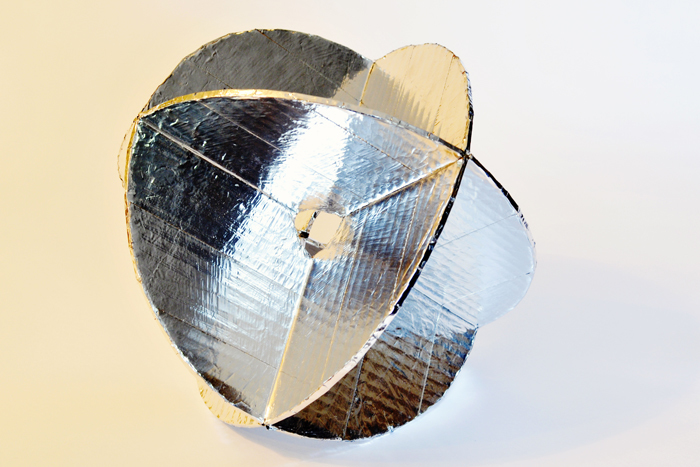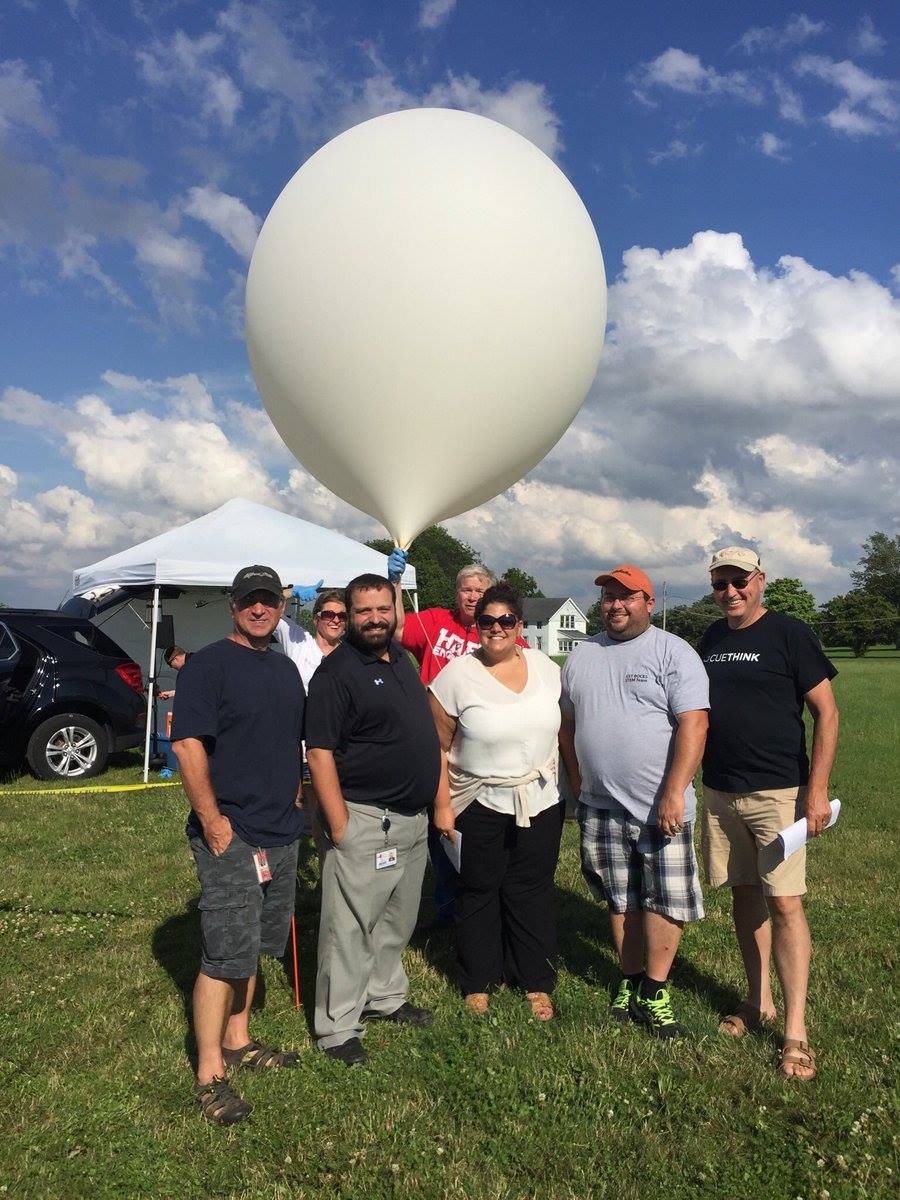Weather Balloon Radar Reflectors
To ensure aviation safety, the rules and safety regulations in place by the Federal Aviation Administration (FAA) generally require the use of an in-flight radar reflector in the United States for larger high altitude balloon flights. This helps avoid collisions even in conditions of poor visibility, although, we recommend that you don’t fly at all in poor visibility. Smaller high altitude balloon flights are that exempt from FAR Part 101 Subpart D are not technically required to utilize an on-board radar reflector, but it’s still a good idea to include one anyways.
Radar reflectors can be bought commercially or built yourself. Commercially available radar reflectors are frequently found as a sailboat supply item, but we recommend building your own because it is so easy! All you need is some cardboard as a support surface and aluminum foil or (even better) some aluminum foil tape. Simply use some thin and rigid cardboard to create surfaces that face in all three directions: up/down, front/back and left/right. They can be completely rectangular or rounded surfaces. We use rounded surfaces to conserve weight. Cover the surfaces with the aluminum foil and try to keep them as smooth as possible. You can use a credit card to squeegee the surface and smooth out any wrinkles.
When building your own, the biggest requirement is that the radar reflector is visible from all angles. It must be three dimensional so that a radar signal will have a reflective surface to bounce off of no matter where it comes from. Any shape (cubular, spherical) will work. You can attach it to your payload train by cutting a hole through the center and slipping it onto the rope. You can use tape (or other knotting techniques) to keep it in place. The diameter of your reflector should be between 8 and 12 inches across.


